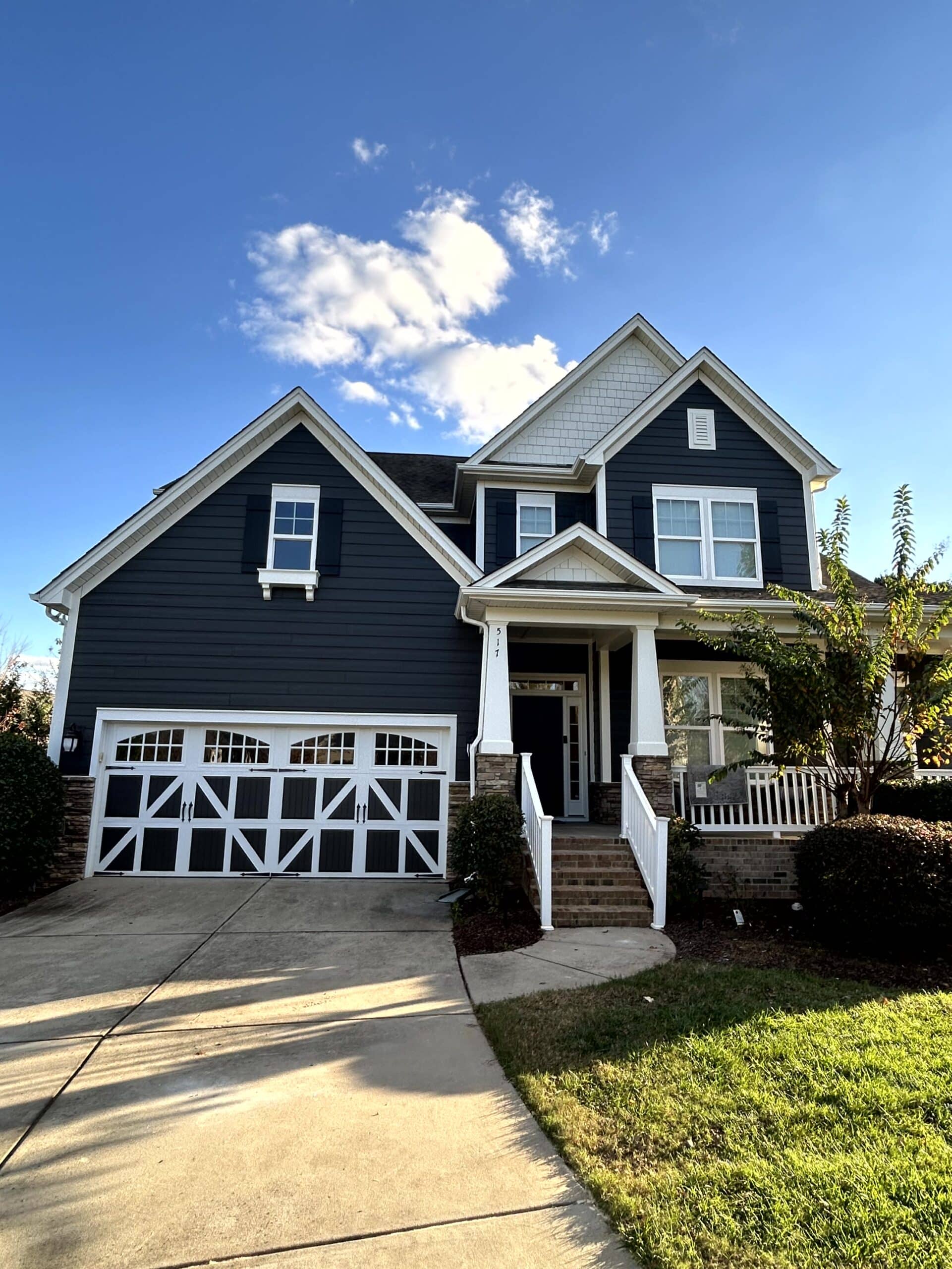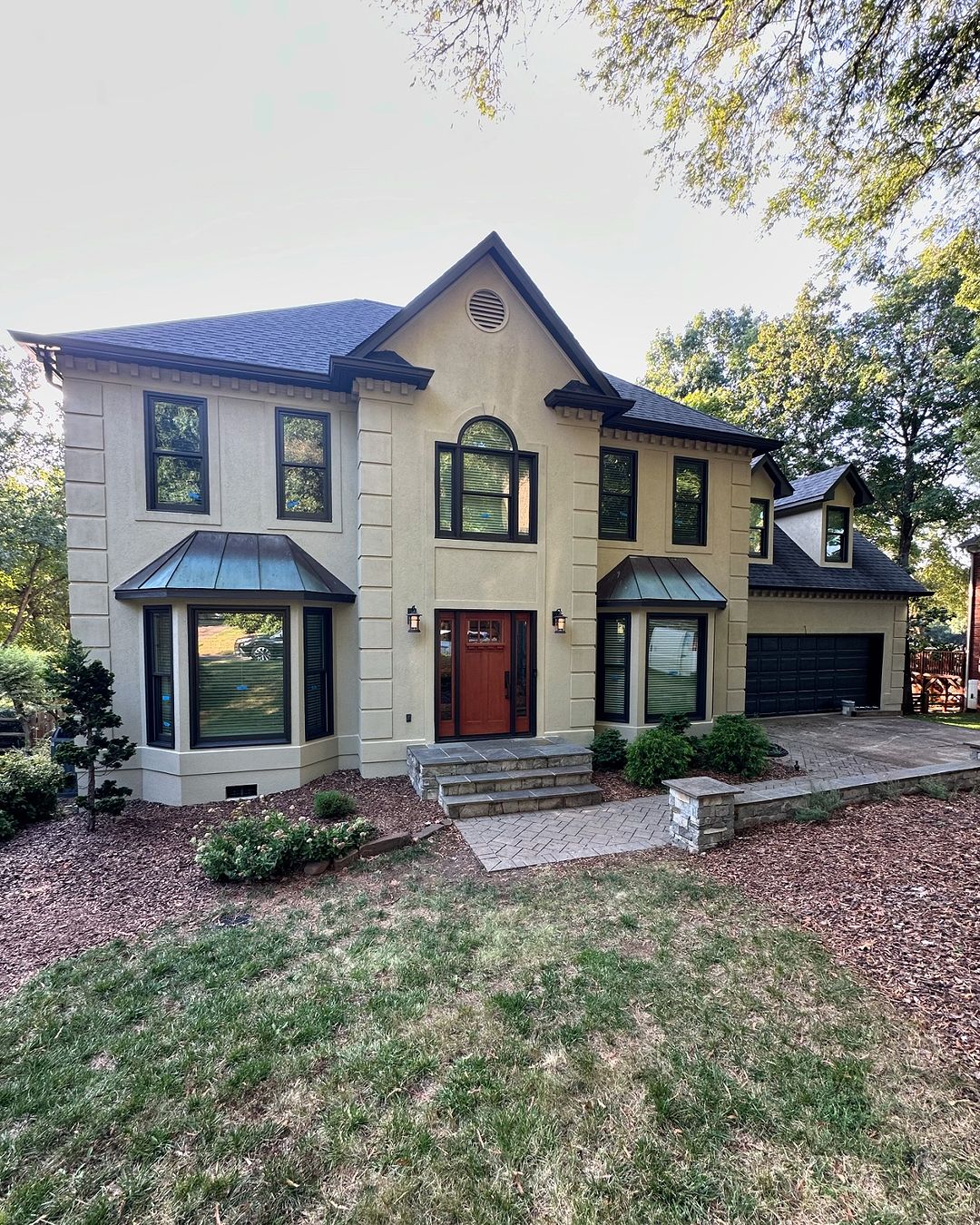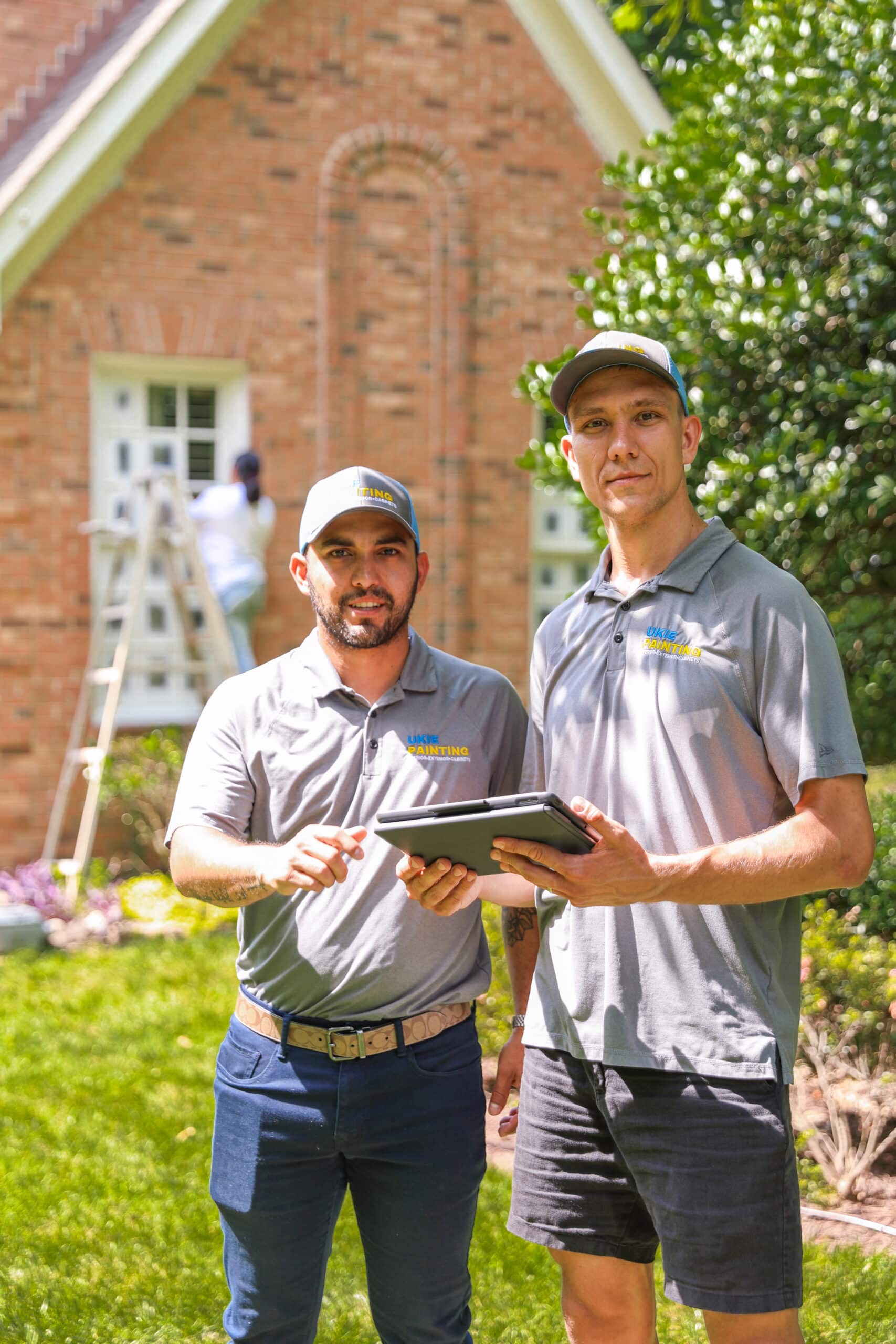Charlotte is full of charming, historic homes. From the tree-lined streets of Dilworth to the classic architecture in Plaza Midwood and Myers Park, these properties tell the story of the city’s rich past. But if your home was built before 1978, there’s a very real chance it contains exterior lead paint — and that’s something you shouldn’t ignore.
Lead-based paint was widely used before the federal government banned it in residential construction in 1978. It offered durability and color vibrancy, but its toxic effects weren’t fully understood — or acknowledged — until decades later.
This blog is your guide to identifying lead paint on your Charlotte home’s exterior and learning how to handle it safely.
What Is Lead Paint and Why Is It a Health Risk?

What Is Lead Paint?
Lead paint contains high levels of lead, a heavy metal that was once added to paints for its durability and color retention. It was especially popular on exteriors because it resisted moisture and sun damage.
But when lead paint ages, it deteriorates. And that’s when it becomes dangerous.
Why It’s a Health Hazard
-
Inhalation of Dust: Lead dust can be released when paint is sanded or chipped and then inhaled.
-
Ingestion Risk for Children: Young children might touch contaminated surfaces and then put their hands in their mouths.
-
Cumulative Impact: Lead builds up in the body over time and can affect nearly every system.
Common Symptoms of Lead Poisoning:
| Age Group | Symptoms | Severity if Untreated |
|---|---|---|
| Children | Developmental delays, learning difficulties, irritability | Neurological damage |
| Pregnant Women | High blood pressure, miscarriage, premature birth | Harm to fetus |
| Adults | Headaches, memory loss, joint pain, digestive issues | Organ damage |
In Charlotte’s older neighborhoods, this concern is very real. Many homes built before 1978 still have their original layers of paint — sometimes underneath newer coats — quietly posing a risk.
How to Identify Lead Paint on Your Home’s Exterior
Knowing whether your home contains lead paint is the first step in protecting your family and your investment.
Key Indicators:
-
Year Built: If your Charlotte home was built before 1978, assume there’s a chance lead was used.
-
Peeling or Chipping Paint: Lead often deteriorates in a specific pattern called “alligatoring,” where it cracks and curls like reptile skin.
-
Multiple Layers of Paint: Older homes with many layers of exterior paint may have lead underneath the top layer.
How to Test:
-
DIY Lead Test Kits:
-
Available at local hardware stores like Lowe’s or Home Depot.
-
Simple swab test changes color when lead is detected.
-
Inexpensive and quick, but not always 100% reliable.
-
-
Professional Lead Paint Inspection:
-
Certified lead inspectors use X-ray fluorescence (XRF) tools to test multiple surfaces.
-
More accurate and detailed, especially helpful for older or historic homes in Charlotte.
-
Don’t scrape or sand suspicious paint until testing confirms it’s lead-free. Disturbing it can release toxic dust.
The Dangers of Disturbing Lead Paint
Lead paint becomes dangerous when it’s damaged or disturbed. It doesn’t matter whether it’s indoors or outside — once it’s airborne or on surfaces, it can be easily inhaled or ingested.
When Lead Paint Is Disturbed:
-
Scraping and sanding release toxic dust.
-
Wind or rain can spread lead particles into soil and air.
-
Dust can enter through open windows or HVAC systems.
Why DIY Can Be Risky
Many homeowners in Charlotte want to tackle renovation projects themselves. But working with lead requires more than good intentions — it demands proper containment, equipment, and certified knowledge.
Real Hazards:
-
Contamination of children’s play areas or pets’ outdoor spaces.
-
Residual lead dust in soil near the home.
-
Lead particles tracked indoors on clothing or shoes.
Pro Tip: If you see dust or peeling paint near the foundation, assume it could be lead and avoid sweeping or power-washing until it’s tested.
Safe Practices for Handling Lead Paint

If lead is present, safe handling becomes a top priority — especially if you’re repainting or repairing exterior surfaces.
1. Seal Off the Work Area
-
Use plastic sheeting to create a barrier around the work zone.
-
Secure windows and vents to prevent indoor contamination.
2. Wear the Right Gear
| Equipment | Purpose | Must-Have? |
|---|---|---|
| NIOSH-Approved Respirator | Filters out airborne lead particles | ✅ Yes |
| Protective Eyewear | Prevents eye exposure | ✅ Yes |
| Disposable Coveralls | Stops lead dust from clinging to clothing | ✅ Yes |
| Gloves and Shoe Covers | Helps prevent contamination spread | ✅ Yes |
3. Clean Up Thoroughly
-
Use HEPA vacuums and wet-wipe surfaces after each session.
-
Do not dry-sweep or use standard vacuums — these spread particles.
4. Consider Safer Methods
-
Encapsulation: Paint over the existing lead layer with a sealant.
-
Professional Removal: Trained contractors use chemical strippers or water-saturated removal techniques to minimize dust.
Lead Paint Removal: What to Expect
Hiring a professional to remove exterior lead paint is the safest and most effective route. Here’s what to know:
What Is Lead Abatement?
Lead abatement is the regulated process of reducing or eliminating lead-based paint hazards. This includes testing, containing the area, safely removing or encapsulating lead, and disposing of contaminated materials properly.
Common Techniques:
| Method | Description | Best For |
|---|---|---|
| Wet Scraping | Moistens paint to reduce dust during removal | Smaller projects or touch-ups |
| Chemical Stripping | Breaks down paint chemically without sanding | Decorative features or trims |
| Encapsulation | Seals lead paint under a protective coating | Surfaces in good condition |
Cost Estimates:
Lead removal isn’t cheap, but it’s an investment in safety.
| Size of Area | Estimated Cost (Charlotte Avg.) |
|---|---|
| Small Porch (100 sq ft) | $800–$1,500 |
| Full Home Exterior (2,000 sq ft) | $15,000–$25,000 |
Always compare quotes from multiple certified contractors and ask for proof of EPA certification.
Understanding Lead Paint Risks During Renovations

Evoto
Home improvement projects can stir up lead hazards — even if lead isn’t the direct focus.
Plan Ahead:
-
Always test painted surfaces before removing siding, replacing trim, or cutting into walls.
-
Notify your contractor if you suspect lead.
-
Check that your contractor is EPA RRP Certified.
The EPA Renovation, Repair, and Painting (RRP) Rule
This federal law requires contractors working on homes built before 1978 to follow strict safety procedures to minimize lead exposure.
If your contractor doesn’t know what the RRP Rule is — that’s a red flag.
Lead Paint and Long-Term Maintenance
You don’t have to remove lead to stay safe — but you do need to monitor and maintain it carefully.
Maintenance Steps:
-
Inspect annually for cracking, peeling, or bubbling paint.
-
Repaint as needed with high-quality exterior paint designed for durability.
-
Avoid pressure washing lead-painted surfaces.
Safe Paint Choices:
Stick with trusted exterior paints from brands like Benjamin Moore or Sherwin-Williams. Modern paints are lead-free and better suited for Charlotte’s humid summers and mild winters.
Why Hiring a Professional Is Crucial
The reality is, lead paint is not a DIY project. Proper testing, removal, and disposal must be handled by trained experts.
What Professionals Provide:
-
EPA-certified knowledge of safe handling practices
-
Full containment and cleanup
-
Specialized equipment and materials
-
Regulatory compliance and legal documentation
Why It Matters:
In Charlotte, improper lead handling can lead to civil penalties under state and federal law. But more importantly, hiring a pro protects your family, your neighbors, and the environment.
If you’re unsure whether your home has lead paint or how to proceed, our team at Ukie Painting is here to help. We offer certified lead testing and full exterior painting services across Charlotte, NC.
Final Thoughts on Lead Paint Safety
Lead is more than a cosmetic issue — it’s a health hazard hiding in plain sight, especially for Charlotte’s many historic homeowners. With so many beautiful older homes in the area, it’s vital to approach repainting or renovation with care.
Don’t risk your family’s health or your home’s value by ignoring the signs. Testing, proper removal, and safe repainting aren’t just smart — they’re essential.
Suspect lead on your Charlotte home? Let’s fix that.
Contact Ukie Painting today for certified lead paint testing, safe removal, and premium exterior painting services. We’ll help you protect your home — beautifully and safely.




